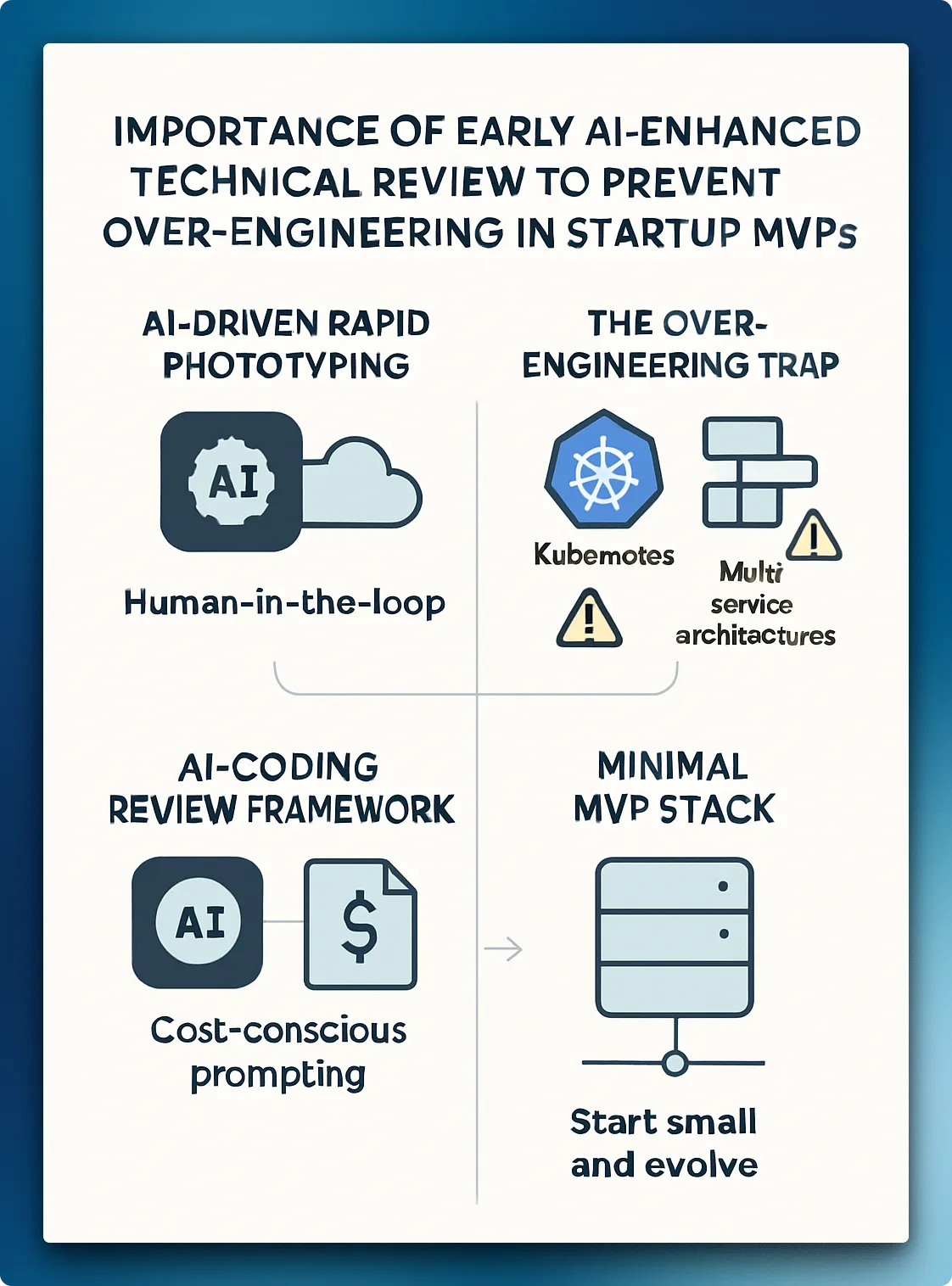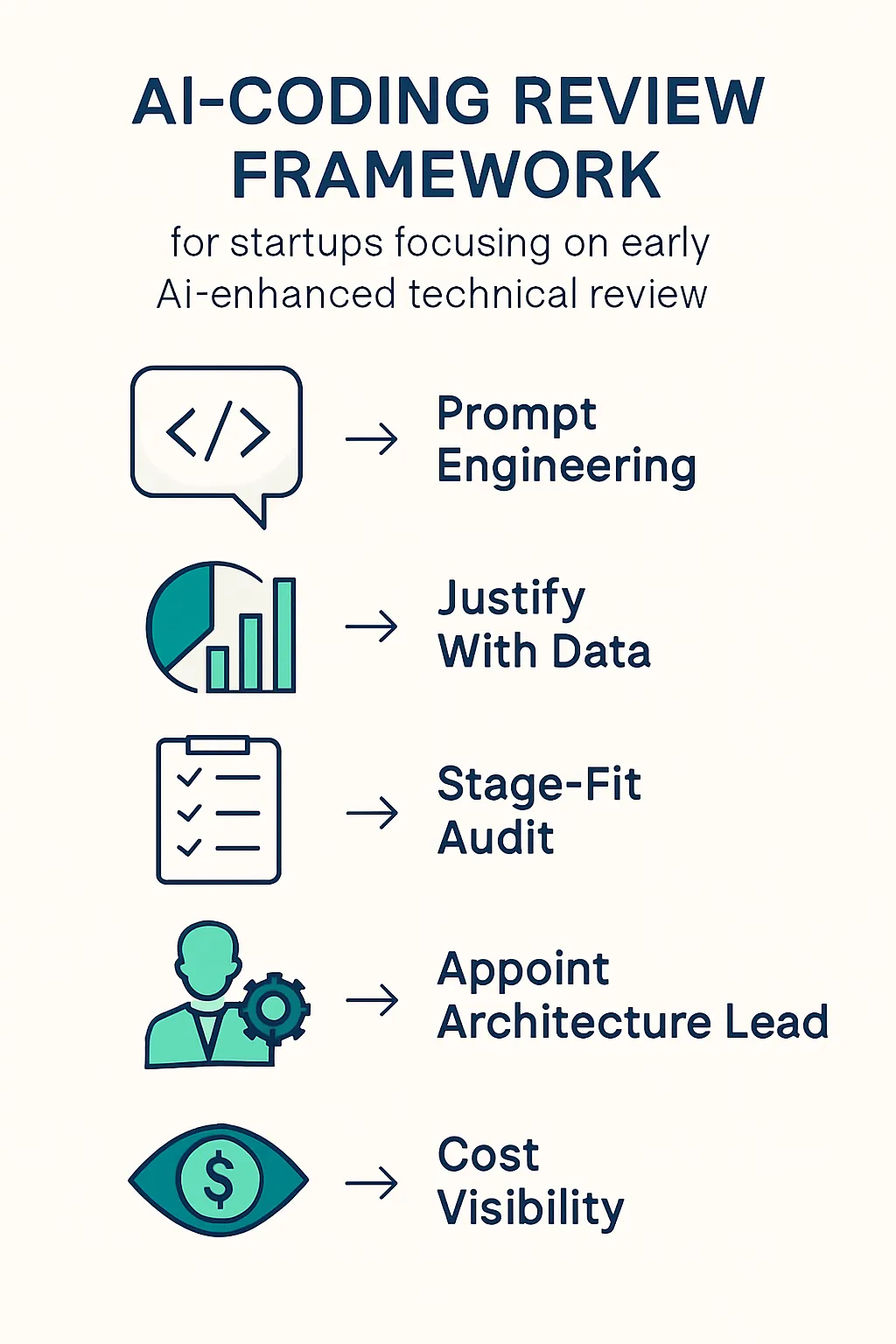Cost-Conscious Vibe Coding: Stop AI Over-Engineering
By Rainbowlab AI Team on August 12, 2025
🚀 Don’t Let AI Over‑Engineer Your MVP: The Case for Early AI‑Enhanced Technical Review
The rise of Generative AI and LLM‑based coding assistants like Copilot has made it possible to spin up new projects in minutes. With AI‑powered rapid prototyping, you can go from idea to working code almost instantly. But speed without AI‑enhanced technical review is risky — you could be committing to an over‑engineered, high‑cost architecture before you have a single user.

The Over‑Engineering Trap
Ask a Generative AI coding assistant to “create a new startup project” and you’ll often see algorithmic scaffolding like:
- Kubernetes on a major cloud provider
- Separate containers for frontend and backend
- Multiple replicas, managed databases, load balancers, and microservices from day one
That’s classic AI‑driven development at enterprise scale — and it comes with $150–$200/month idle costs before day‑one traffic.
The AI isn’t wrong — it’s pulling patterns from high‑scale production systems. But without human‑in‑the‑loop cost‑conscious review, these architectures ignore the realities of startup burn rate and early‑stage demand.
Why AI‑Powered Projects Need Early Technical Review
In AI‑accelerated development, the cheapest time to fix design flaws is before code is written. Skipping this human‑guided architecture review leads to:
- Dead‑end AI‑generated architectures you later have to rip apart
- Higher baseline spend (always‑on clusters, idle VMs)
- Slower pivots because the system is too complex for an MVP stage
A short cost‑first review can save months of burn and avoid painful migrations.
The AI‑Coding Review Framework

-
Engineer the Prompt (Prompt Engineering)
Instead of “build me a backend” say:
“Target <$20/month idle cost. Single VM, no Kubernetes, SQLite unless Postgres is strictly required. Deploy as monolith.”
-
Justify With Data
Any AI suggestion should include idle and projected cost estimates. If it can’t justify the expense, it doesn’t go in.
-
Stage‑Fit Audit
Match architecture to stage — if you have <10 beta users, AI‑powered infrastructure orchestration is overkill.
-
Appoint an Architecture Lead
Even in tiny teams, one person decides what survives from AI’s ideas.
-
Visibility From Day Zero
Treat budget as part of the AI‑in‑the‑loop workflow — every component comes with cost visibility.
A Minimal AI‑Era MVP Stack
- Compute: Single small VM or low‑tier PaaS
- Data: SQLite or entry‑level managed DB
- Networking: No load balancer until traffic demands
- Deployment: Simple pipeline or AI‑suggested Docker Compose
- Monitoring: Basic logging/health checks — skip enterprise‑grade observability until needed
Evolve when measured demand requires it, not because an AI hallucinated “best practice” from an enterprise repo.
Bottom Line
We’re in an age where Generative AI can take you zero‑to‑one in hours — but without cost‑conscious AI prompting and human‑centric architecture governance, you can end up with enterprise‑level bills and startup‑level revenue.
Treat your AI assistant like a junior solutions architect with infinite ideas and zero budget awareness. You own the blueprint. You approve the build.
The cheapest migration is the one you never have to do.